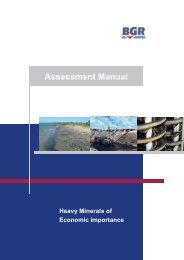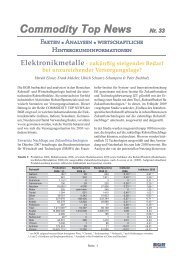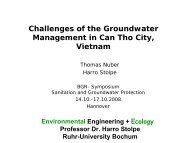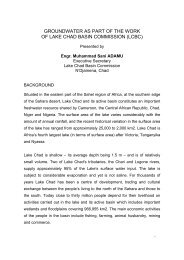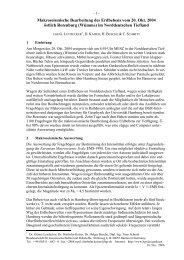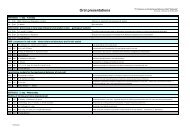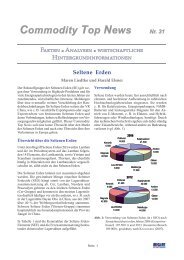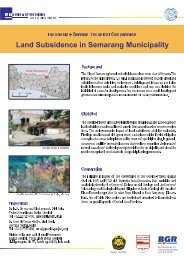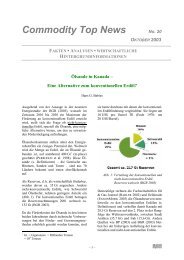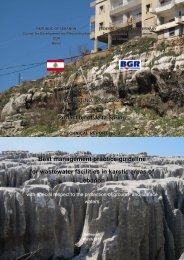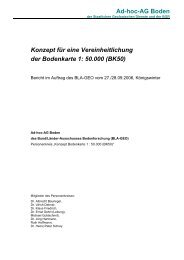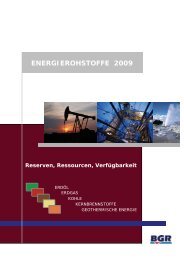THE SMOOTH SOUNDING GRAPH. A Manual for Field Work ... - BGR
THE SMOOTH SOUNDING GRAPH. A Manual for Field Work ... - BGR
THE SMOOTH SOUNDING GRAPH. A Manual for Field Work ... - BGR
Create successful ePaper yourself
Turn your PDF publications into a flip-book with our unique Google optimized e-Paper software.
26<br />
Simulating this zooming by enlarging the distance L between the current<br />
electrodes we shall record a sounding graph ρa( L<br />
2 ) as shown in Fig.19.<br />
Fig.19<br />
The "push and pull"-process can easily be recognized. But looking at the<br />
depth scale on top using the L/2-scale simultaneously we will find no con-<br />
nection between these two scales with respect to the depth of the layer<br />
interfaces and the maximum and mini-<br />
mum of the curve. An optical check will<br />
only result in the resistivity of the first<br />
and of the last layer and the fact that a<br />
4-layer case is concerned. This seems to<br />
be a striking illustration to the final re-<br />
mark in chapter 1.4.: "How deep are you<br />
now?"<br />
The zooming process underlines very<br />
clearly that the logarithmic scale is the<br />
adequate measure <strong>for</strong> geoelectrical<br />
sounding. Looking at Fig.20 we find at<br />
the right the log. profile of our 4-layer<br />
case (see Fig.18) with interfaces at 2m,<br />
6m and 26m depth. If we multiply these<br />
depths by 10 we get interfaces at 20m,<br />
60m and 260m below surface. This profile



